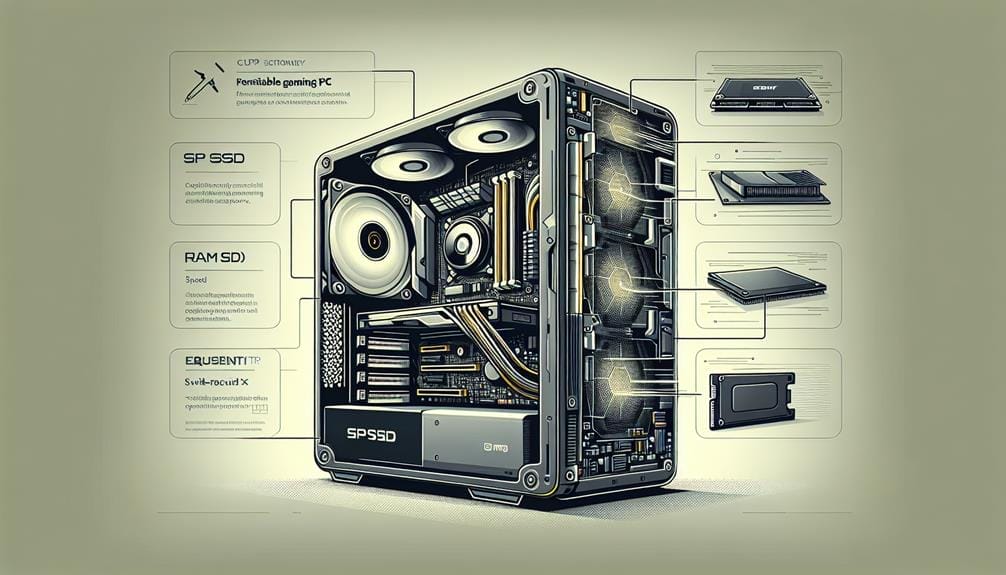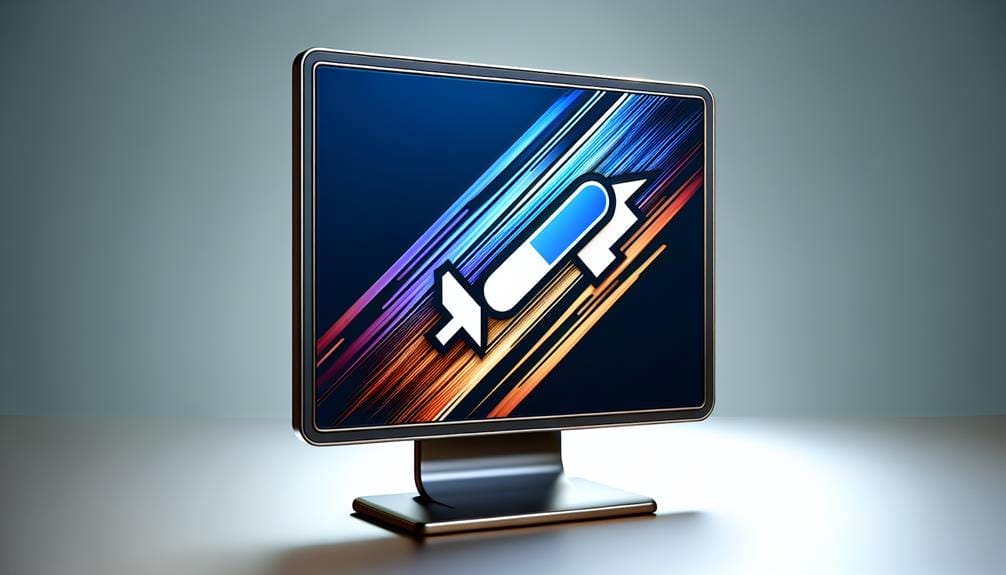Optimize Your PC: Speed or Size Matters

Ongoing enhancements in computer optimization regularly ignite discussions on whether enhancing speed or expanding storage capacity is more critical for boosting PC performance, an essential consideration.
As individuals seek to tailor their computing experience to their specific needs, the quest to strike a balance between faster RAM and increased capacity becomes increasingly significant.
The interplay between these attributes extends beyond mere technical specifications, impacting the efficiency and capability of a system across various tasks and applications.
By exploring the implications of this dichotomy in real-world scenarios, this discussion aims to shed light on the nuanced decision-making process, offering valuable insights for users navigating the complex terrain of PC optimization.
Key Takeaways
- RAM speed is not a significant factor for general desktop use
- Increasing RAM capacity is the preferable upgrade for general use
- Faster RAM can stabilize performance and reduce stuttering in gaming
- Sufficient RAM capacity is crucial for smooth video editing and rendering workloads
Understanding RAM Importance

Understanding the critical role of RAM in optimizing PC performance is fundamental for efficient and smooth operation. RAM, or Random Access Memory, is a vital component that holds actively used applications for quick access by the CPU, GPU, and storage.
It plays a crucial role in ensuring seamless multitasking and overall system responsiveness. RAM optimization is essential to prevent performance bottlenecks, and the impact of RAM speed should not be underestimated. Faster RAM can significantly improve the CPU's ability to handle intensive tasks and stabilize performance, particularly in gaming and content creation scenarios.
It is important to consider both RAM capacity and speed to ensure optimal performance for specific workloads. By understanding the importance of RAM and its speed, users can make informed decisions when upgrading their systems for improved efficiency.
General Use Considerations
For general PC users, prioritizing RAM capacity over RAM speed is essential for optimizing performance and ensuring smooth multitasking. When considering general use, it's important to understand the specific needs of different tasks. Here are some key considerations to keep in mind:
- RAM capacity is crucial for multitasking: Having sufficient RAM capacity allows for seamless switching between applications, reducing lag and improving overall system responsiveness.
- RAM speed is beneficial for gaming performance: Faster RAM can enhance gaming experiences by improving the CPU's ability to handle intensive scenes, stabilizing performance, and reducing stuttering during gameplay.
Gaming Performance Factors

When optimizing a PC for gaming performance, it is crucial to acknowledge that faster RAM can significantly enhance the overall gaming experience by improving the CPU's ability to handle intensive scenes, stabilizing performance, and reducing stuttering during gameplay. The speed of RAM directly impacts the frame rate and the smoothness of gaming, while the capacity of RAM determines the amount of data that can be processed at any given time. Below is a comparison of the impact of RAM speed versus capacity on gaming performance:
| RAM Speed vs Frame Rate | Impact of RAM Capacity on Gaming Performance |
|---|---|
| Higher RAM speed can lead to an increase in frame rate and overall smoother gameplay. | Insufficient RAM capacity can cause performance issues, such as lag and stuttering, especially in memory-intensive games or when multitasking during gaming sessions. |
Understanding the balance between RAM speed and capacity is essential for optimizing a PC for an enhanced gaming experience.
Rendering & Content Creation Needs
Optimizing a PC for rendering and content creation necessitates a comprehensive understanding of the role of RAM capacity and speed in facilitating smooth performance and efficient workflow.
- Sufficient RAM Capacity: Smooth video editing performance requires sufficient RAM capacity to handle large file sizes and complex editing tasks.
- VRAM Capacity: Adequate VRAM capacity is essential for 3D rendering, ensuring smooth rendering and manipulation of high-resolution textures.
- Faster RAM Performance: Faster RAM can improve overall performance in rendering workloads, reducing lag and enhancing efficiency.
- Avoiding Bottlenecks: RAM capacity plays a critical role in preventing performance bottlenecks, allowing for seamless content creation and rendering processes.
These considerations highlight the significance of both RAM capacity and speed in meeting the demands of rendering and content creation tasks.
Speed Vs Size: a Delicate Balance

In the context of optimizing a PC for rendering and content creation, achieving a delicate balance between the speed and size of RAM is pivotal for ensuring seamless performance and efficient workflow. When considering speed vs size, it's essential to prioritize the optimization of performance.
While larger RAM sizes allow for the handling of more data at once, faster RAM speeds can enhance the speed at which this data is processed. For rendering and content creation, it's crucial to strike a balance between the two, ensuring that the system has sufficient memory capacity while also enabling swift data retrieval and processing.
This delicate equilibrium can significantly impact the efficiency and speed of tasks such as video editing, 3D rendering, and other content creation processes, ultimately enhancing productivity and workflow.
Casual Users and Gamers
For casual users and gamers, understanding the impact of RAM speed and capacity on system performance is essential for optimizing their computing experience. When it comes to gaming performance, the choice between faster RAM and more RAM can significantly influence the overall gaming experience.
Here's how RAM speed vs capacity can impact gaming performance:
- Faster RAM can improve CPU's ability to handle intensive scenes
- Faster RAM helps stabilize performance in older titles
- Games can run fine with 8 GB of RAM
- RAM speed can stabilize performance and reduce stuttering
Professional User Priorities

Professional users, particularly those engaged in demanding workloads such as video editing and rendering, must carefully consider the optimal balance between RAM speed and capacity to ensure efficient performance.
When it comes to professional user requirements, RAM capacity needs are paramount. Insufficient RAM capacity can lead to laggy performance in video editing and other content creation tasks, while adequate capacity can prevent bottlenecks.
While faster RAM can improve performance in rendering workloads, the most crucial consideration for professional users is to prioritize more RAM to meet their demanding workload requirements.
Avoiding RAM Bottlenecks
To mitigate potential performance issues and ensure smooth operation, it is essential to proactively address the possibility of RAM bottlenecks within your system. When it comes to RAM bottlenecks, it's crucial to consider the impact of RAM speed on multitasking performance.
To identify and resolve RAM bottleneck issues, consider the following:
- Monitor RAM usage and performance regularly to identify potential bottlenecks
- Upgrade to faster RAM to improve multitasking capabilities and overall system responsiveness
- Consider increasing RAM capacity to accommodate the demands of modern applications and multitasking
- Optimize system settings and close unnecessary background processes to alleviate RAM pressure
Workload-Specific Requirements

Mitigating potential performance issues related to RAM requires a detailed understanding of workload-specific requirements to ensure optimal system operation. Workloads such as gaming, rendering, and general desktop use have distinct RAM needs. For instance, gaming benefits from faster RAM to stabilize performance and reduce stuttering, while rendering and content creation rely more on sufficient RAM capacity and VRAM requirements for 3D rendering. Additionally, XMP (Extreme Memory Profile) technology can be utilized to enhance RAM performance, particularly in gaming and rendering tasks. Understanding these workload-specific requirements is essential for determining whether faster RAM, more RAM, or a balance of both is needed to optimize system performance.
| Workload | RAM Requirement | VRAM Requirement |
|---|---|---|
| General Desktop Use | More RAM Capacity | N/A |
| Gaming | Faster RAM | N/A |
| Rendering & Creation | More RAM Capacity | High VRAM Capacity |
Conclusion
In conclusion, the debate between prioritizing faster RAM or increasing RAM capacity is a crucial consideration for optimizing system performance.
Understanding the nuanced interplay between RAM speed and capacity in different operational contexts is essential for making informed decisions tailored to specific computing requirements.
By clarifying the significance of RAM attributes in diverse workloads, users can effectively strategize to maximize their PC's potential and avoid bottlenecks.

